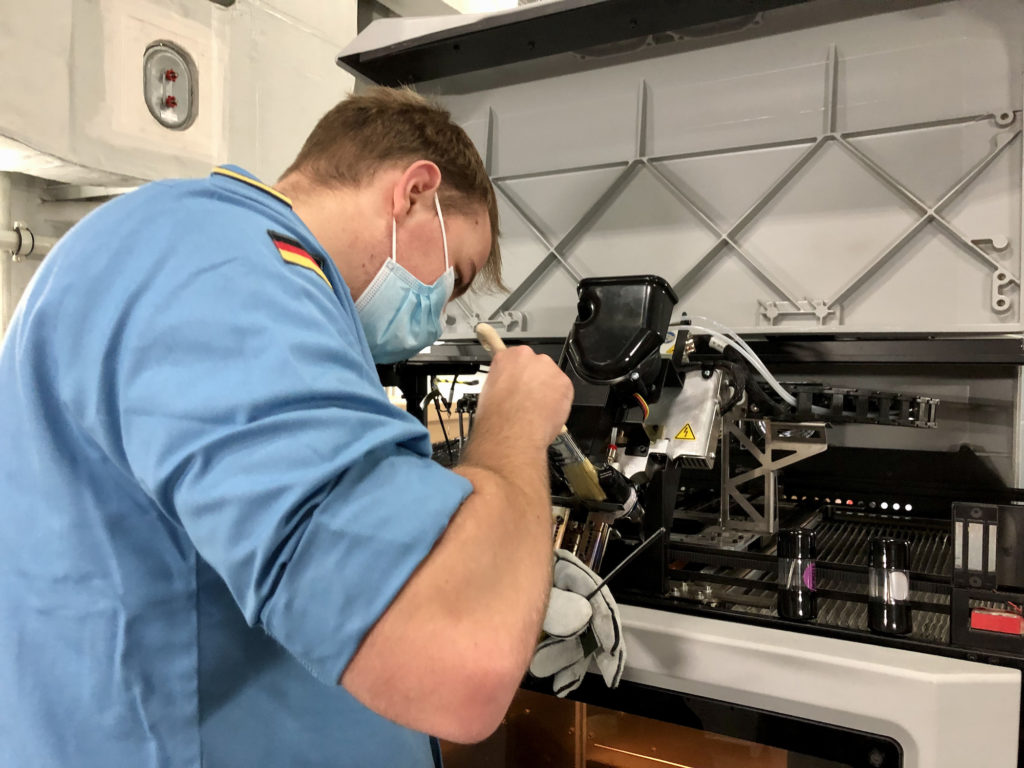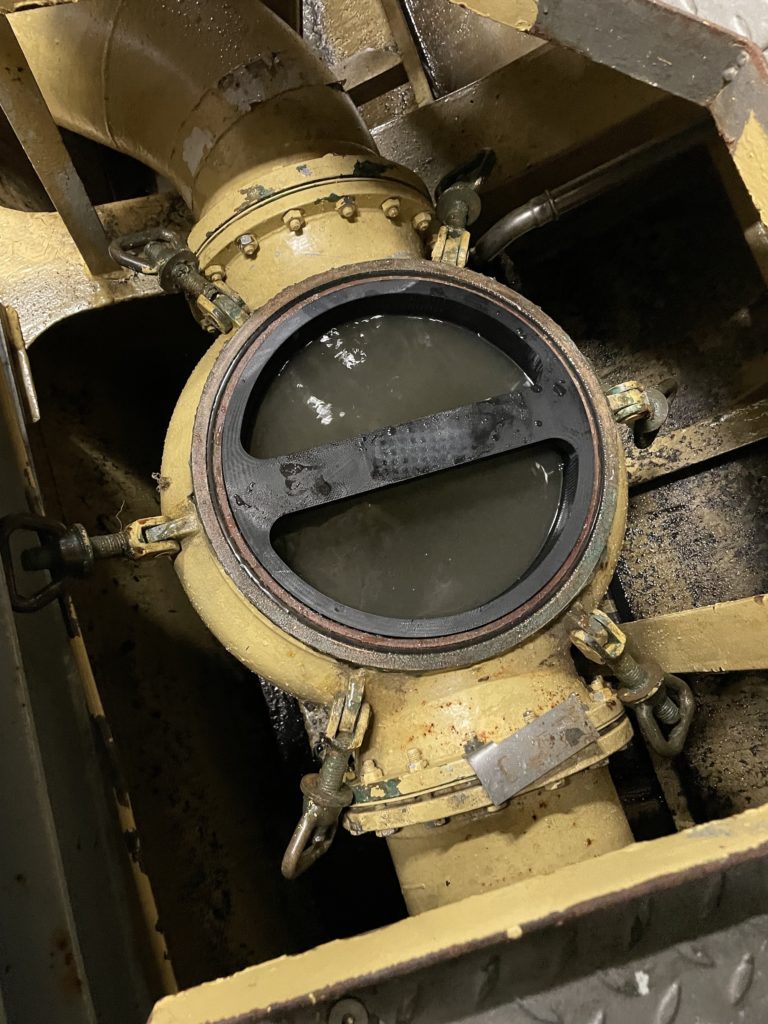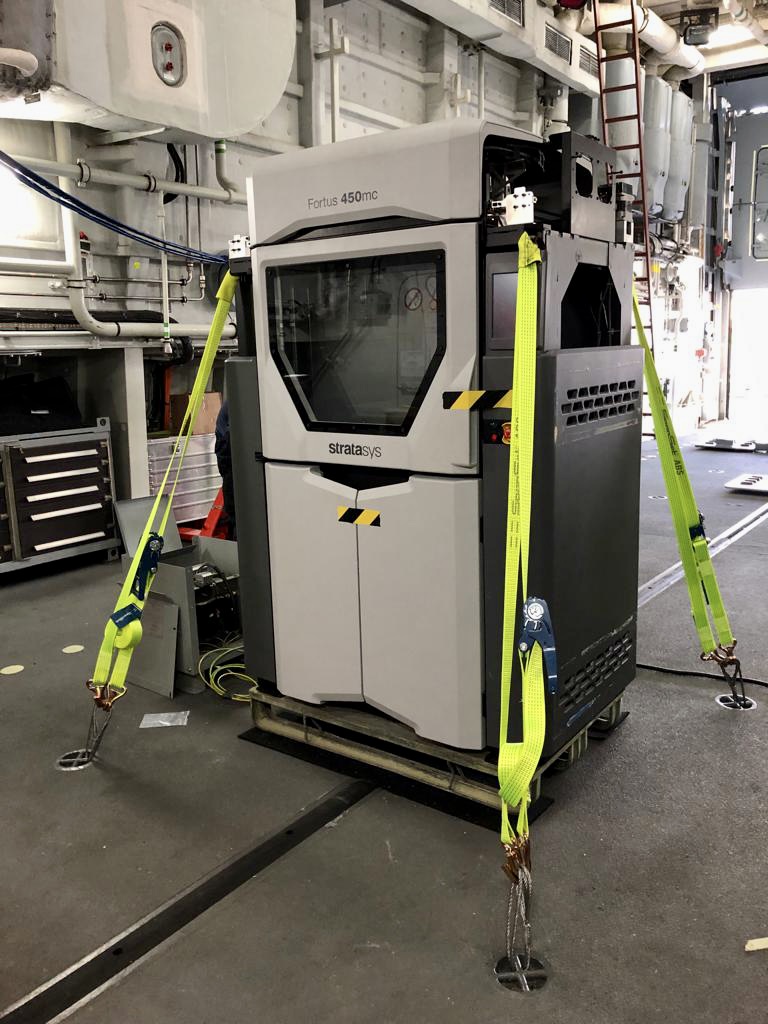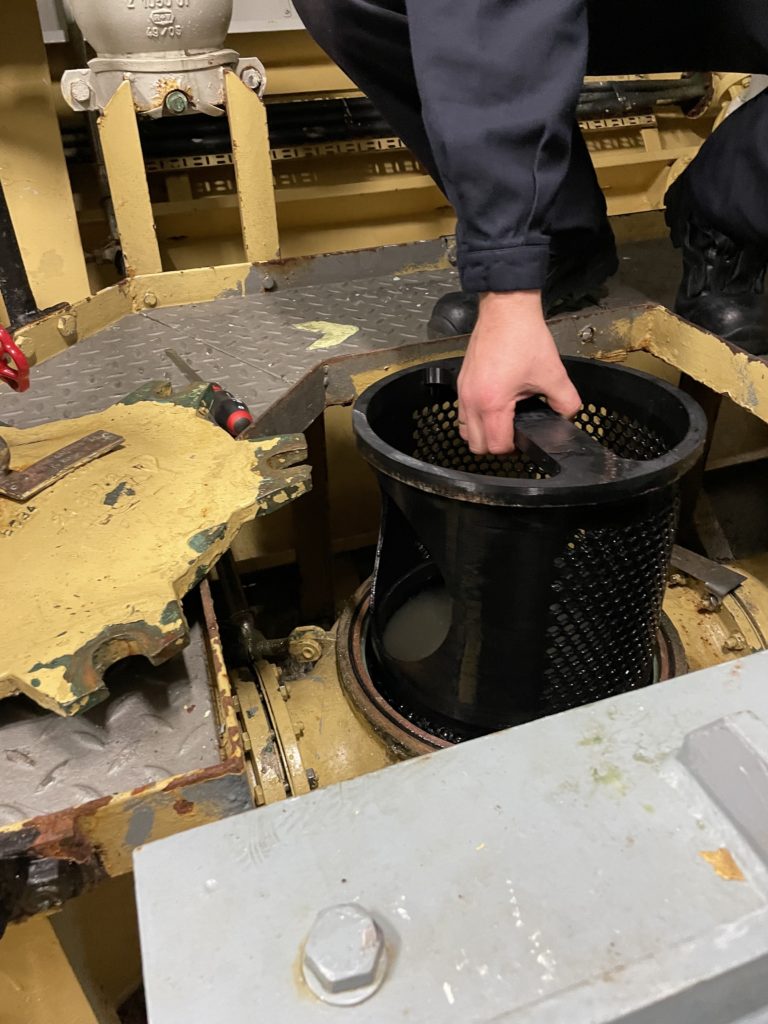Additive manufacturing in the German Navy is entering the next stage. After the very successful trials on various ship types such as frigates, corvettes and replenishment ships in 2021, the promising results led to the first procurement of MEX printers for the German Navy in 2022.
This year, the training of soldiers is set to begin at the Naval Engineering School in Stralsund. Subsequently, the first units will be equipped with a printer.
The aim is to increase the availability of the units by using the new technology. In an industrial environment in which high availability and rapid recovery of operational capabilities are important, additive manufacturing can deliver its full potential. However, the foundations for this must also be laid. These lie in training and the right mindset, as well as in the creation of a database for parts. This will enable a digital spare parts inventory to be built up within the next few years and thus spare parts to be produced at sea in the future.
Since the terms 3D printing and additive manufacturing are collective terms and too imprecise, but technical terms such as selective laser melting and fused filament fabrication are usually only used by specialist personnel, comprehension problems can arise when communicating requirements with higher-level departments. To minimise these problems, a simplified logic is therefore used to describe the processes and machines implemented in the German Navy.
The integration is carried out according to Hartig’s integration logic for the support of temporarily self-sufficient systems. Four levels of additive manufacturing were identified for this purpose. These levels form a pyramid-like structure, with the horizontal axis representing the dissemination and the vertical axis level of complexity. In principle, the classification is based on the organisational structure together with the usable resources on board. Small MEX printers with low resource requirements for space and operator training can be used on the vast majority of all units and are assigned to Level 1 AM. Larger systems that for example, require peripherals, use higher-strength polymers and can implement correspondingly more complex applications and require correspondingly more trained personnel can only be used on larger units.
The first two levels can enable ships to generate parts in order to cover needs for a short time until the logistics system can resupply the respective unit. The efficiency of the supply system is in turn enhanced with the help of the two higher levels. Level 3 AM machines that rely on laser powder bed fusion technology, for example, cannot be used on board due to the available resources and the risk to personnel. Use on land, e.g. in the naval arsenal, is a very good way to utilise the advantages of these technologies and also to use synergy effects due to the needs of the various units.
In the future, Level 4 AM technologies and processes will enable the production of certified spare parts through cooperation with industry. Until then, so-called interim components will be produced for makeshift repairs. These components will be used until the spare part can be supplied via the existing logistics system.
Level 1 AM machines have now been procured in the course of the integration and are to be used on all units of the Navy at sea as well as ashore. This is done in accordance with the basic concept from simple to complex.
Based on the evaluation of the data, the next stage of the integration concept will then be implemented. The units that have the necessary resources such as space, manpower, energy, etc. will be equipped with a more powerful Level 2 AM system.
More information and selected use cases from the trials will be presented at the Additive Manufacturing Strategies conference on February 8, 2023 at 4 p.m., where I will be presenting as part of the 3D Printing in Transportation session, sponsored by Mobility Goes Additive. Register for the event here.
Subscribe to Our Email Newsletter
Stay up-to-date on all the latest news from the 3D printing industry and receive information and offers from third party vendors.
Print Services
Upload your 3D Models and get them printed quickly and efficiently.
You May Also Like
3D Printing News Briefs, July 2, 2025: Copper Alloys, Defense Manufacturing, & More
We’re starting off with metals in today’s 3D Printing News Briefs, as Farsoon has unveiled a large-scale AM solution for copper alloys, and Meltio used its wire-laser metal solution to...
3DPOD 260: John Hart on VulcanForms, MIT, Desktop Metal and More
John Hart is a Professor at MIT; he´s also the director of the Laboratory for Manufacturing and Productivity as well as the director of the Center for Advanced Production Technologies....
3D Printing News Briefs, June 28, 2025: Defense Accelerator, Surgical Models, & More
In this weekend’s 3D Printing News Briefs, 3YOURMIND was selected to join an EU Defense Accelerator, and PTC has announced model-based definition (MBD) capabilities within Onshape. Finally, a study out...
EOS in India: AM’s Rising Star
EOS is doubling down on India. With a growing base of aerospace startups, new government policies, and a massive engineering workforce, India is quickly becoming one of the most important...






































